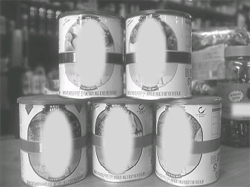Where do we stand?
 There are clear indications that toxic heavy metals in the environment have increased to harmful levels. But though the extreme toxicity of heavy metals have been scientifically established, there are several who still differ in their opinion on the effects of pollution. S D Makhijani, senior scientist at cpcb, says heavy metal contamination is not yet a problem in India. While M L Jain, head of environmental science, Nuclear Research Laboratory, iari, says most of the heavy metals monitored are below the permissible levels. Various studies in India do not show this to be true. But even if these scientists and officials are correct, should we wake up only when heavy metals start claiming lives?
There are clear indications that toxic heavy metals in the environment have increased to harmful levels. But though the extreme toxicity of heavy metals have been scientifically established, there are several who still differ in their opinion on the effects of pollution. S D Makhijani, senior scientist at cpcb, says heavy metal contamination is not yet a problem in India. While M L Jain, head of environmental science, Nuclear Research Laboratory, iari, says most of the heavy metals monitored are below the permissible levels. Various studies in India do not show this to be true. But even if these scientists and officials are correct, should we wake up only when heavy metals start claiming lives?
The mef and moh are responsible for regulation of heavy metal pollution. The cpcb , which is under the mef , is the authority in the field of environmental pollution in India. It sets standards for effluents and emissions for industries and entrusts the state pollution control boards to enforce these. Under the moh are four Central Food Laboratories ( cfl ), in Mysore, Calcutta, Pune and Ghaziabad. The Mysore cfl is responsible for setting limits on heavy metals in food. Besides, there is the pfa Act, 1954, which provides tolerance limits for heavy metals in food articles.
But these standards do not work. Neither does research go smoothly in India. The work is totally compartmentalised and research organisations are not ready to share their findings with each other, says P S Dutta, principal scientist at the groundwater division of the Nuclear Research Laboratory, iari . "Instead of looking at the problem in a holistic manner, institutes like cpcb do not share results of their surveys and consider it as their personal property, despite reminders,' he laments.
The pfa does not provide tolerance limits of many food articles. Of the 19 heavy metals, it has set limits only for seven. Infant milk formula, the only diet for infants, has no specific limits for any metal. According to K L Radhakrishnan, secretary of pfa , the Central Committee for Food Standard sets the limits of heavy metals in food items. "But the last meeting was held in 1996 and unless another meeting is scheduled, nothing can be done.'
Interestingly, the ministry of food and civil supplies, which is responsible for the quality control of canned fruit does not follow the pfa limits. Instead, it follows the limits set by the Fruit Products Order, 1955, whose limits are higher than the pfa . These are only a few glaring examples of the incoherence in the working of the designated authorities.
So far, the government has only advocated cleaner, healthier and better environment, but has actually done precious little to achieve the goal. Besides lacking in their initiative to launch a clean-up drive, the bureaucrats, who decide the research and its funding, "are unaware of the heavy metal problem in the country,' say scientists at the soil science division, iari . "And they decide the projects which the government should undertake.'
What can be done?
"We seek to enhance the quality of our environment by mastering the science of metallurgy and materials technology but, in the process, we jeopardise the quality of our own life by exposing ourselves to heavy metal pollution,' says S A Abbasi, director, Centre for Pollution Control and Energy Technology, Pondicherry. And that is exactly what is happening.
The only way to minimise the heavy metals threat is to limit their use. For the long-term planning, the less we excavate the earth for minerals, the better. Substituting minerals with natural products, composites and non-toxic metals is another option. But even while considering such alternatives, the pollution prevention option must be considered. Popular practices like metal coating and colouration of food should also be banned and food additives strictly certified.
A multi-disciplinary approach is necessary for critical sample collection, assured quality analysis, interpretation of laboratory and epidemiological data and surveillance. As far as possible, monitoring and surveillance should be maintained in the "hot spots' of metal contamination. There is also an urgent need to establish standards of heavy metal levels in air, soil, water and living beings.
No industrial effluents or sewage should be allowed to be discharged into rivers or natural bodies without prior treatment and no metal-polluting industry be permitted in food-growing belts. Ecological tax reforms should also be introduced. Toxic products should be taxed and industries responsible for the heavy metal load in the environment should be fined.
It is not a question of whether heavy metal contamination is a problem, but whether we should act before it is too late. Enough of this conspiracy of silence!
Based on papers by Amit Nair, environmental toxicologist at CSE, and K C Sahu, former professor at IIT, Mumbai
Related Content
- Order of the Supreme Court regarding protection of Great Indian Bustard (GIB) and Lesser Florican, 21/03/2024
- Advancing gender equality in Asia and the Pacific in the context of climate change
- Tracking progress on food and agriculture-related SDG indicators 2023
- Sustainable development report for Small Island Developing States 2023
- Building materials and the climate: constructing a new future
- Order of the National Green Tribunal regarding cutting of trees in a 'deemed forest' by Bhopal Municipal Corporation, 04/08/2023
